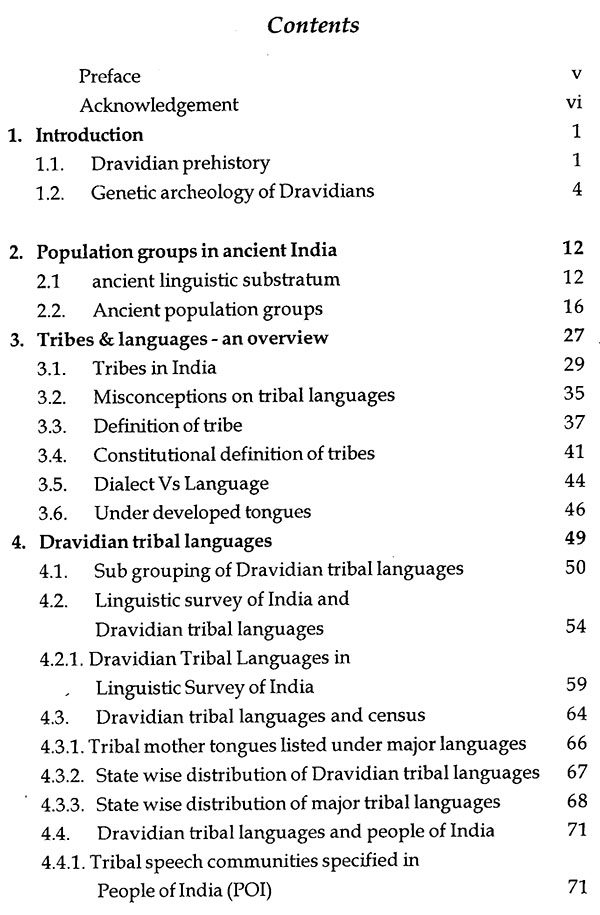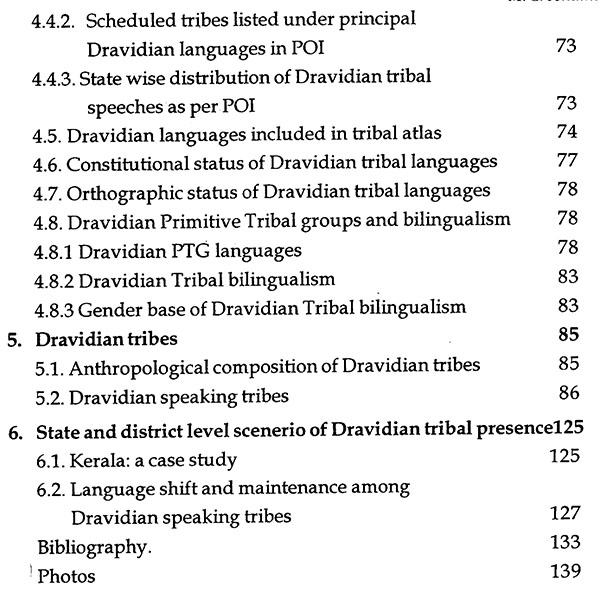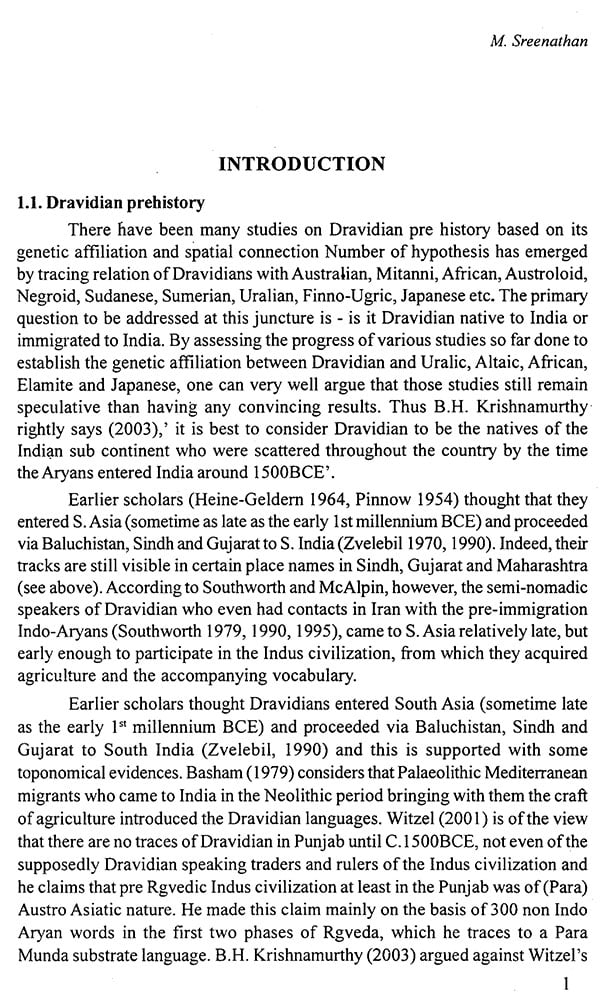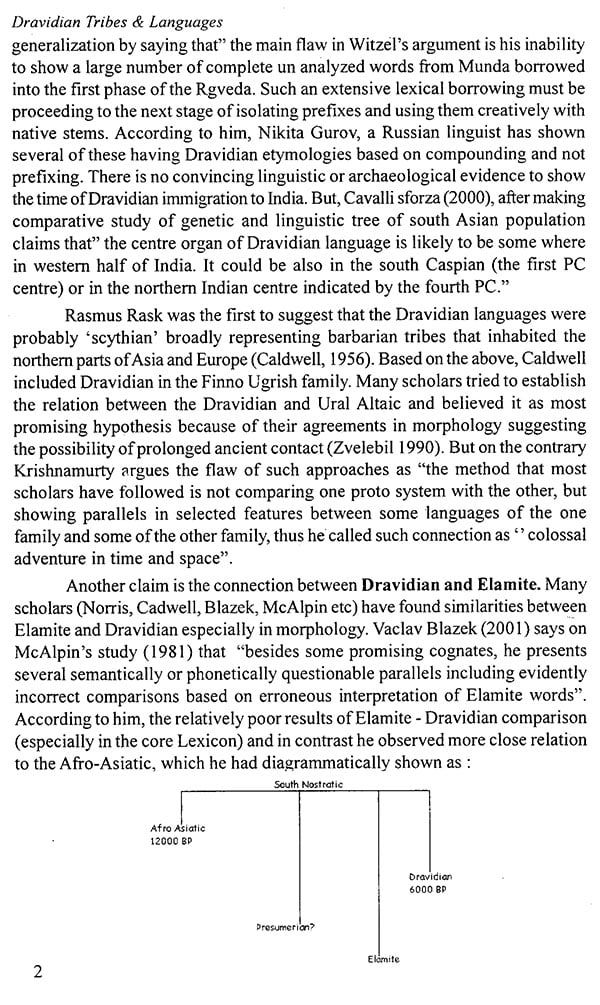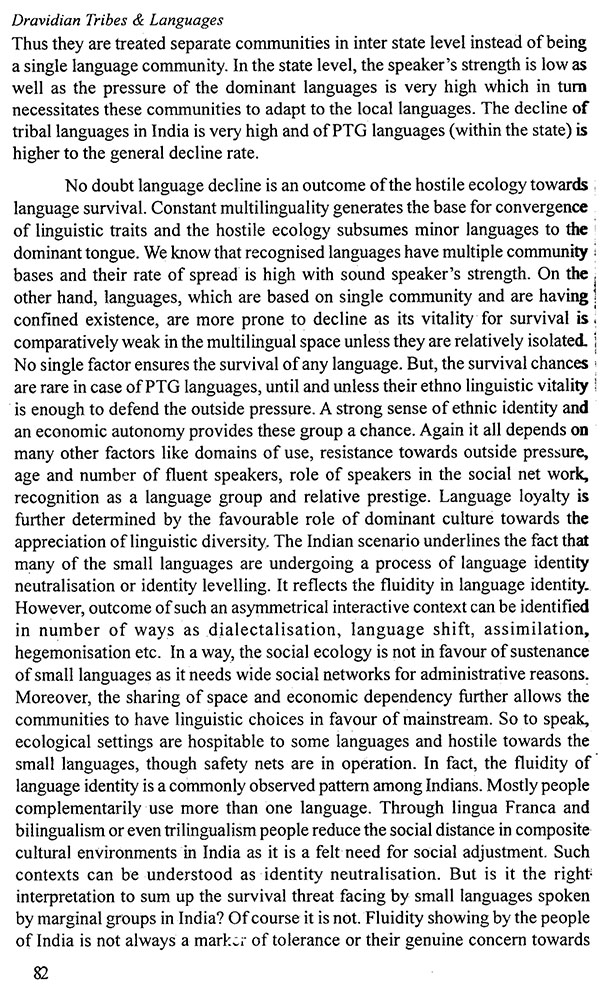
Dravidian Tribes & Languages
Book Specification
| Item Code: | NAX093 |
| Author: | M. Sreenatham |
| Publisher: | Dravidian University Campus |
| Language: | English |
| Edition: | 2008 |
| Pages: | 146 (13 B/W Illustrations) |
| Cover: | PAPERBACK |
| Other Details | 9.00 X 6.00 inch |
| Weight | 180 gm |
Book Description
M. Sreenathan, presently Associate Professor, Department of Dravidian and Computational Linguistics, Dravidian University and formerly with the Anthropological survey of India, Ministry of Culture, Government of India has vast research experience in field linguistics, done extensive field research among the Paleolithic remnants of the Andaman and Nicobar islands, participated in several national and international seminars delivered lectures on varied aspects of tribal language and culture, published five books and more than fifty research articles both in national and international journals including ‘anthropos’. His area of interests are, Anthropological Linguistics eco- linguistics, language diversity, language & genetics and Technology.
Dravidian University was established in 1997 to mirror the real and rich picture of Dravidian culture not only in its linguistic, literary, cultural and philosophical facets in science and technological angles also.
The spirit of integration is the guiding force behind the creation of the University. The linguistic and cultural integration, not only at the regional but also at the national level is the cherished objective of the University.
The Government of Andhra Pradesh started Dravidian University, with the co-operation of the sister states, to research and reflect on the inherent oneness of the cultures of Dravidian family of the four sates whose languages number up to 27. Its endeavour is to promote unity and amity in the family of several languages. The main objectives of Dravidian university are to augment the common weal and social well being of the communities of marginal languages and to build bridges among the southern states. While working on each language separately in varied areas, it aims at a synthesis and a discovery of the common heritage through Comparative studies.
India is unique in terms of its language diversity and is one of the hot spots of language diversity in the globe. Diversity is our inner strength. The co existence of large number of languages and their speech varieties reflects the vast language heritage. It is highlighted by even more large number of minor languages and the distribution of these languages is diverse and complex. Unfortunately, these minor identities are under survival threat. Issue of decline of tribal languages is one of the major concerns. There is no denying to the urgency of documenting endangered tribal languages, although its definition and constituents are still matters of protracted debate. This is because many tribal. languages are either extinct or on the wane. Keeping the urgency, Dravidian university has already proposed to establish an interstate repository of Dravidian tribal languages. The task of documenting tribal languages has been facilitated in recent times due to the availability of theoretical base derived from ethno-linguistics from all over the world. Further, linguistics research has attained a good deal of sophistication with computerization and audio-visual recording of data. The theoretical advances in Linguistics and Semiotics as well as the overall growth of Social Sciences have put us in a position to take up the challenge of providing a thoroughly professional description of the entire Dravidian tribal languages. All these are compounded by a strong general concern about the research for preservation and perpetuation of vanishing tongues.
Dravidian tribal linguistic space is a befitting case for the study of language endangerment. The major Dravidian tribal concentration is marked in southern states and central India accommodating distinct ethnic groups and many sub-groups, portraying their equally varied language bases. However, much of this language pool still remains to be systematically investigated and catalogued. Dravidian university is initiating tribal studies in that direction. Due to the current sweep of globalization and penetration of market forces deep into the hitherto inaccessible regions, the rich diversity is threatened and there is a danger that any further delay might wipe out this rich language heritage before it gets recorded.
There is still an ongoing debate regarding the exact number of Dravidian tribes and their languages. In general, Dravidian tribal studies are carried out mainly focusing on the ‘scheduled tribes’. This very fact suggests that such studies have not been explicitly covered the exact number of distinct Dravidian tribal groups and their speeches. Immediate action should be taken for a through survey of the Dravidian tribal culture and speech forms irrespective of the fact that they are scheduled or not. This book - ‘Dravidian Tribes and Languages’ is a sincere attempt as the prime objective of it is to present the extracts of available information on Dravidian tribes and speeches since the Linguistic Survey of India and to arrange them in such a way that their differences in manifestation become explicit. This monograph is a fact finding mission by exposing the status of vanishing Dravidian voices as a preface to the documentation of Dravidian tribal languages to come in future from this very university.
The author presents his personal view on misconception on trial languages and at times engages in polemics. Nevertheless this collection has an inner unity and this unity is primarily the result of its thematic background. The tribes and their speeches have come to the centre again and again in all parts of this book. This book outlines the Dravidian tribal languages as a source to the Dravidian pre history in corroboration with genetic archaeology of Dravidians. I congratulate the author for bringing out this book.
